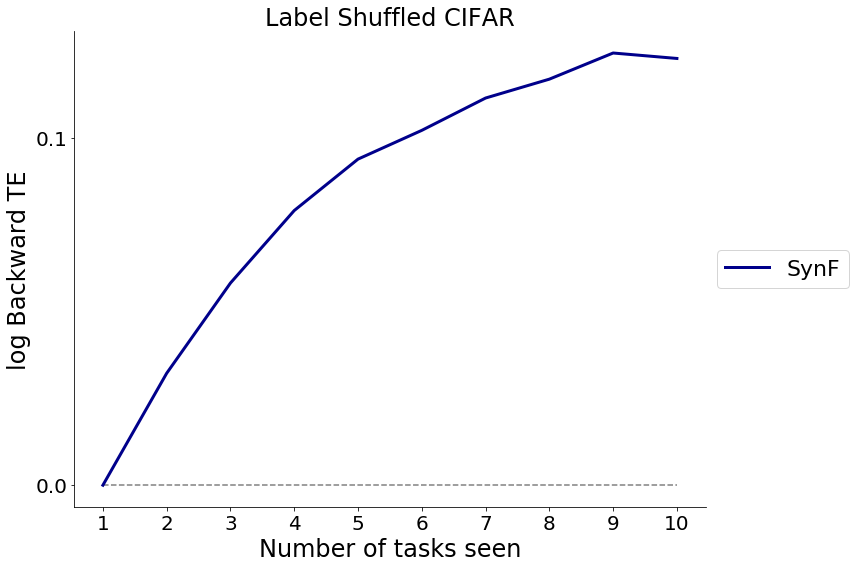Label Shuffle Experiment¶
The progressive learning package utilizes representation ensembling algorithms to sequentially learn a representation for each task and ensemble both old and new representations for all future decisions.
Here, a representation ensembling algorithm based on decision forests (Synergistic Forest) demonstrate forward and backward knowledge transfer of tasks on the CIFAR100 dataset with the labels shuffled. The experiment reproduces the benchmarking adversarial experiment ran in the paper “Ensembling Representations for Synergistic Lifelong Learning with Quasilinear Complexity” by Vogelstein, et al (2020). The following is a link to the aforementioned paper: https://arxiv.org/pdf/2004.12908.pdf
Import necessary packages and modules¶
[1]:
import numpy as np
from tensorflow import keras
from joblib import Parallel, delayed
from itertools import product
Load CIFAR100 data¶
We load the CIFAR100 dataset from Keras, and store it in a variable. The training and test partitions are concatenated into one variable called data_x. The data is obtained from https://keras.io/api/datasets/cifar100/ .
The label shuffle experiment randomly permutes the class labels within each task from task 2 to 10, rendering each of these tasks adversarial with regard to the first task. We show through this experiment that SynF are invariant to class lable shuffling, and both demonstrate transfer.
[2]:
(X_train, y_train), (X_test, y_test) = keras.datasets.cifar100.load_data()
data_x = np.concatenate([X_train, X_test])
Define hyperparameters for the model and preprocess data¶
Running the cells below will define the hyperparameters the experimental setting
num_points_per_task: The number of points per task
shifts: The number of data ways to split the data into train and test
[3]:
num_points_per_task = 500
shifts = 2
num_slots = int(5000 // num_points_per_task)
slot_fold = range(int(5000 // num_points_per_task))
This cell will preprocess the data
[4]:
# Reshape the data
data_x = data_x.reshape(
(data_x.shape[0], data_x.shape[1] * data_x.shape[2] * data_x.shape[3])
)
data_y = np.concatenate([y_train, y_test])
data_y = data_y[:, 0]
Train the model and perform validation¶
run_parallel_exp:¶
Wrapper method for the label_shuffle_experiment function which declares and trains the model, and performs validation with respect to the test data to compute the error of the model at a particular iteration
ntree: Number of trees for Uncertainty Forest
[5]:
from functions.label_shuffle_functions import run_parallel_exp
n_trees = [10] # Number of trees in SynF
shift_fold = range(1, shifts, 1) # Number of shifts
iterable = product(n_trees, shift_fold, slot_fold)
df_list = Parallel(n_jobs=-1, verbose=0)(
delayed(run_parallel_exp)(
data_x, data_y, ntree, num_points_per_task, slot=slot, shift=shift
)
for ntree, shift, slot in iterable
)
Function to calculate backward transfer efficiency¶
The backward transfer efficiency of
We say an algorithm achieves backward transfer for task
calc_bte:¶
Function used to calculate bte across tasks, averaged across all shifts and folds
[6]:
from functions.label_shuffle_functions import calc_bte
btes = calc_bte(df_list, num_slots, shifts)
Plotting the backward transfer efficiency¶
Run cell to generate plot of backward transfer efficiency of the Synergistic Forest algorithm. We see that we achieve backwards transfer overall that increases as more tasks are seen.
plot_bte:¶
Function used to plot bte across tasks
[7]:
from functions.label_shuffle_functions import plot_bte
plot_bte(btes)
